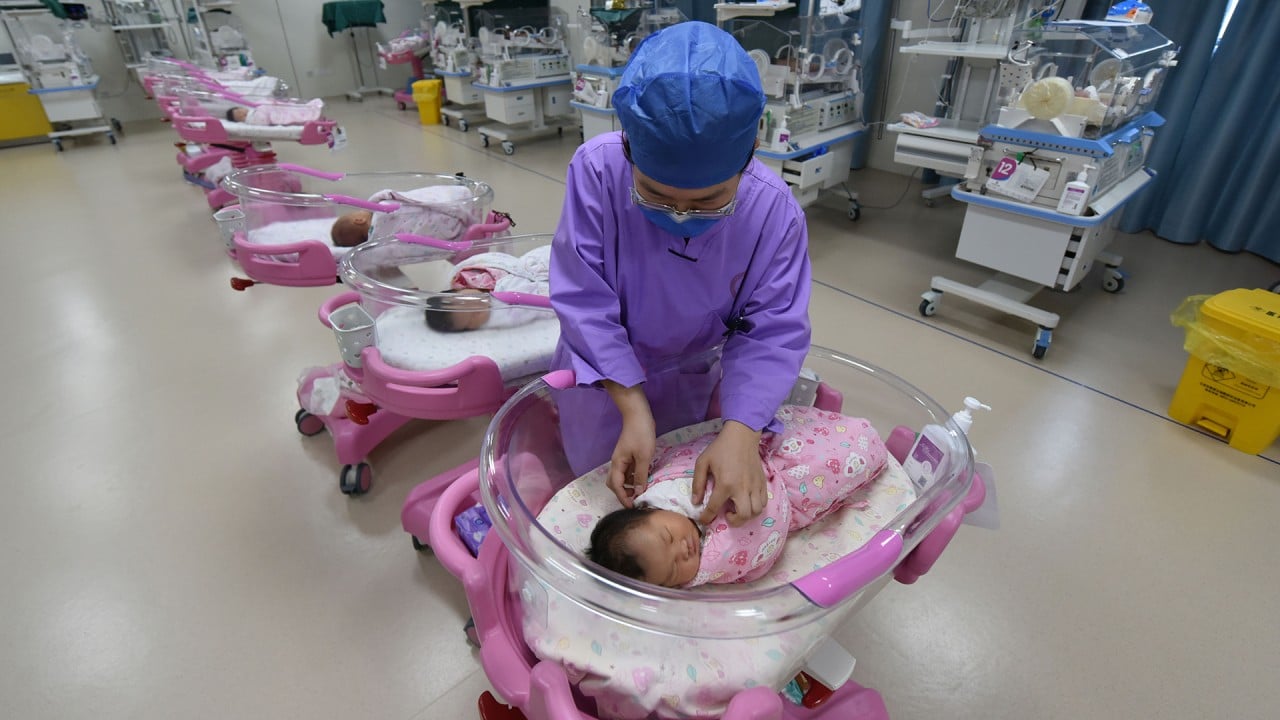Advertisement
Opinion | Without overcoming its fertility challenge, China risks dying out before it gets rich
- Chinese policymakers must somehow implement policies to revive interest in marriage and reduce the cost of raising children without crashing the economy
- But even if they increase the number of births, they will almost certainly be unable to reverse demographic trends that have taken hold across the globe
Reading Time:3 minutes
Why you can trust SCMP
5

China’s population decline, which the central government officially confirmed in January, has led many observers to wonder if the country’s current demographic trends threaten its stability.
Advertisement
According to the National Bureau of Statistics, China’s population shrank last year for the first time in 60 years, nine years earlier than government projections had anticipated. The total fertility rate fell to about 1.1 births per woman, well below the official forecast of 1.8. Most notably, the number of births dropped sharply to 9.56 million, the fewest since 1790, despite China’s shift to a two-child policy in 2016.
But this sharp drop in the number of births is an illusion caused by an exaggeration of pre-2020 numbers. For example, a sample survey from 2016 showed a fertility rate of 1.25 and only 13 million births, which was later inflated to 18.83 million. The United Nations’ 2022 World Population Prospects (WPP) suggests China’s population began declining last year, whereas I estimate the decline began in 2018. The latest WPP also predicted that China’s population would fall to 767 million in 2100, far below its earlier forecast of 1.065 billion.
The UN projections still overestimate China’s population. While the 2022 WPP puts the Chinese population at 1.43 billion people, I estimate it is now smaller than 1.28 billion.
The 2022 WPP also exaggerates China’s future population, predicting a fertility rate of 1.31 for 2023-50 and 1.45 for 2051-2100. The fertility rate among Chinese in the region suggests otherwise. Hong Kong, Macau, Taiwan and Chinese Singaporeans have all had average fertility rates of 1.0 to 1.1 – among the lowest in the world – in the past two decades despite local authorities’ pronatalist policies.
China’s efforts to boost its fertility rate face major challenges. The one-child policy has reshaped the Chinese economy, dramatically increasing the cost of raising children. China’s household disposable income is equivalent to only 44 per cent of its GDP, compared to 72 per cent in the United States and 65 per cent in the United Kingdom. The Chinese housing market was valued at four times the country’s GDP in 2020, whereas the US real estate market was valued at 1.6 times GDP.

Advertisement

